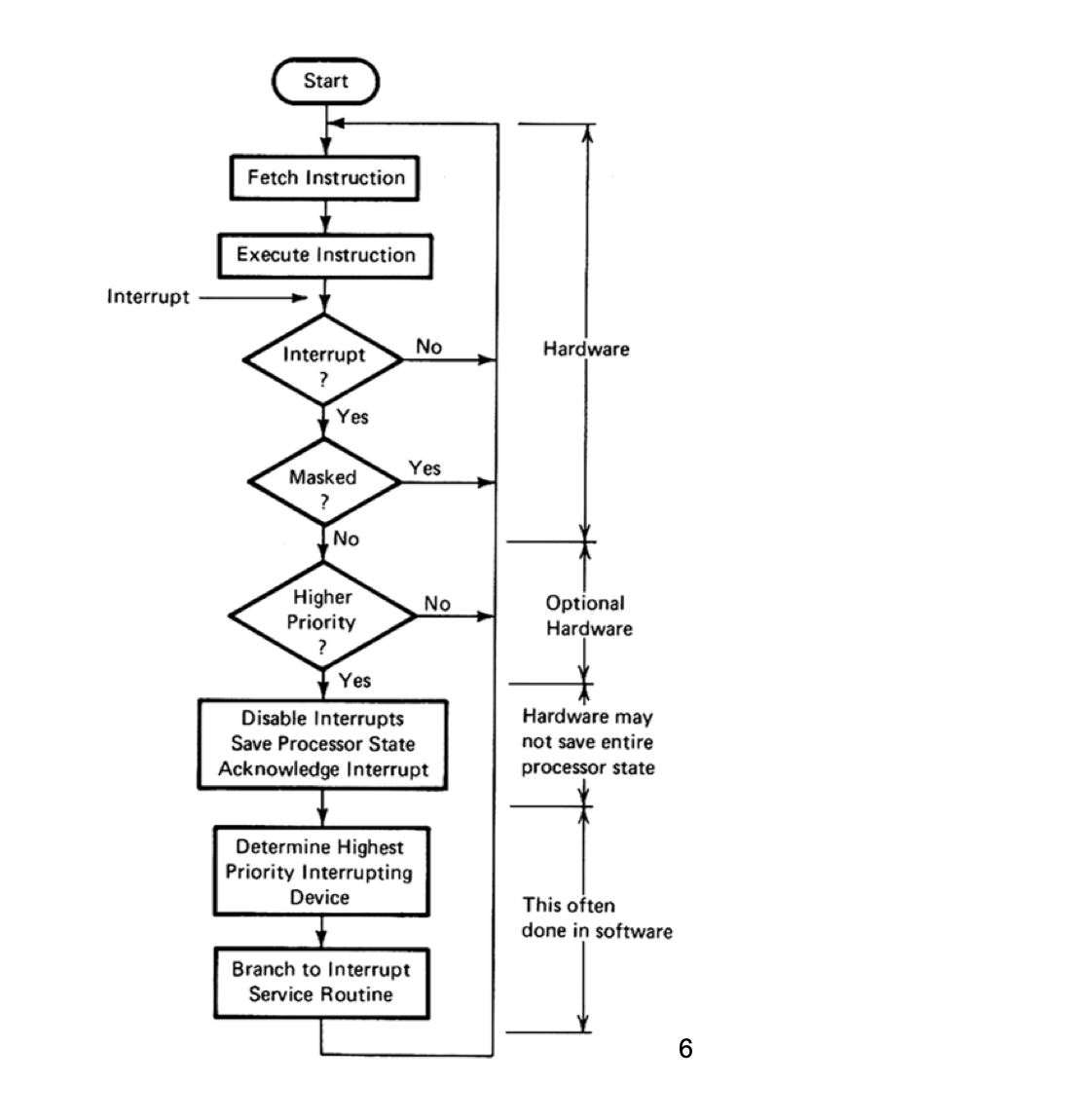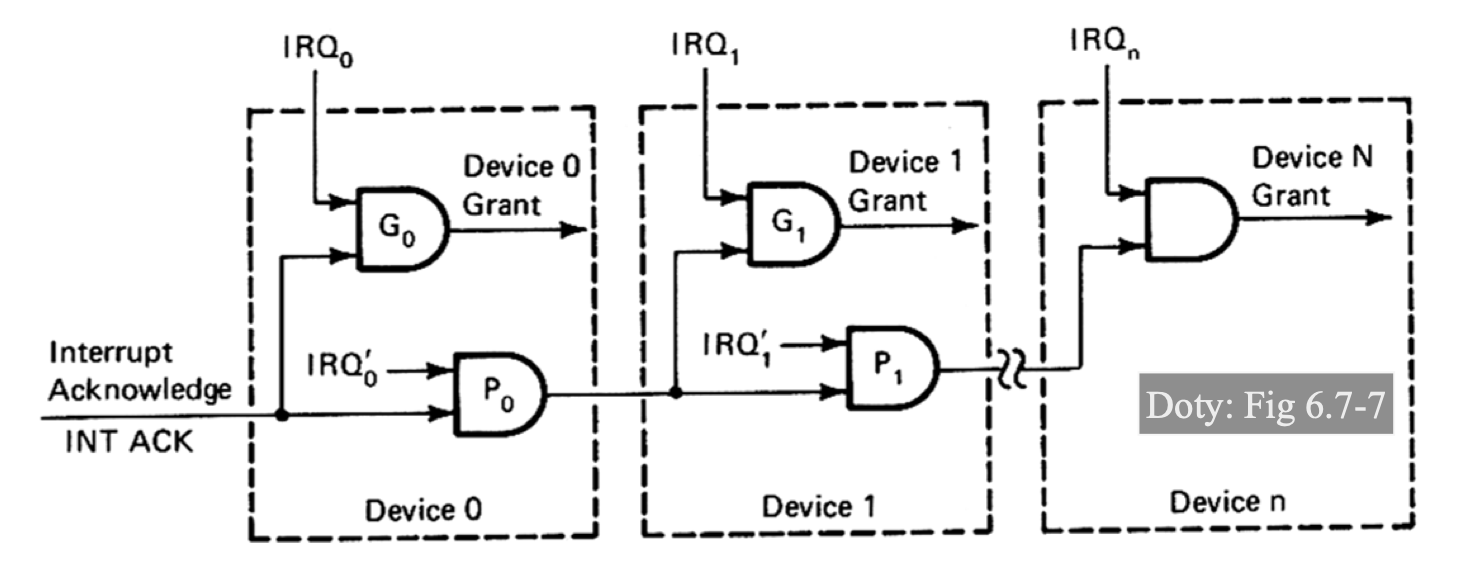Interrupts
- Instead of having to constantly poll to see if a flag is set, interrupt the processor when a flag is set
- When a peripheral needs an action, it can generate an interrupt
Handling

- Masks and priority are to determine which interrupts should interrupt other interrupts
- On Interrupt
- Check if it should interrupt
- The uP will complete execution of the current instruction
- Save the processor status (the CPU registers, except the stack pointer) on the stack
- Branch to a special location (interrupt vector address) to execute a interrupt service routine (ISR) that will service the interrupting
Implementation
- Polling: Daisy-Chain
- Finding ISR Address
In XMEGA
- Has a programmable multilevel interrupt control (PMIC)
- Has 3 interrupt levels (low, medium, high)
- Within each level, the interrupt priority is based on the interrupt vector address (lower the address, higher the priority)
- Interrupts have a global enable (bit
I in status register)
- Set and cleared by
SEI and CLI
RETI (interrupt return) must exist at the end of each interrupt service routine- All interrupts have an interrupt associated flag
- When the interrupt condition is set, the interrupt flag will be set even if the corresponding interrupt is not enabled
- For some interrupts, the interrupt flag is automatically cleared when handled
- Should just always clear just in case
- Clear by running a 1 to it
- Does not support interrupting interrupts
- A higher priority interrupt will just run right after the current interrupt finishes
- NOTE: XMEGA does not store the status register (
SREG) for some reason so it almost always has to be manually pushed and popped


